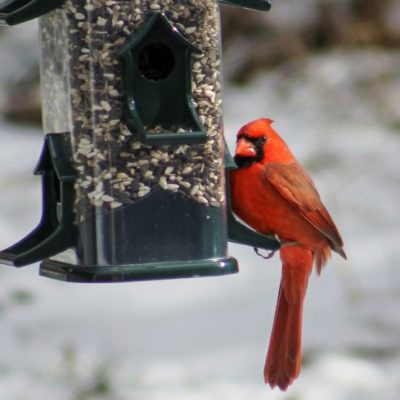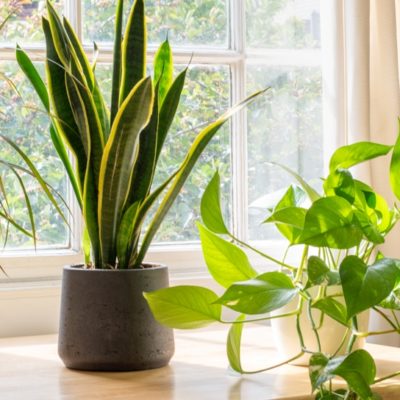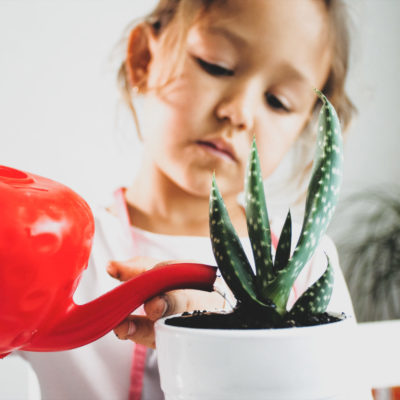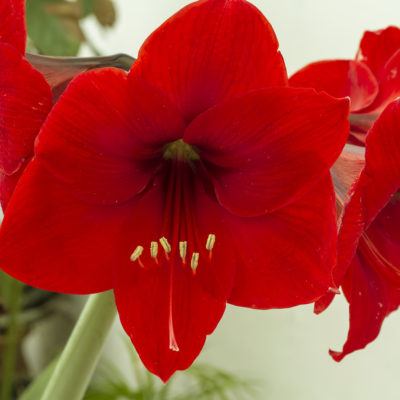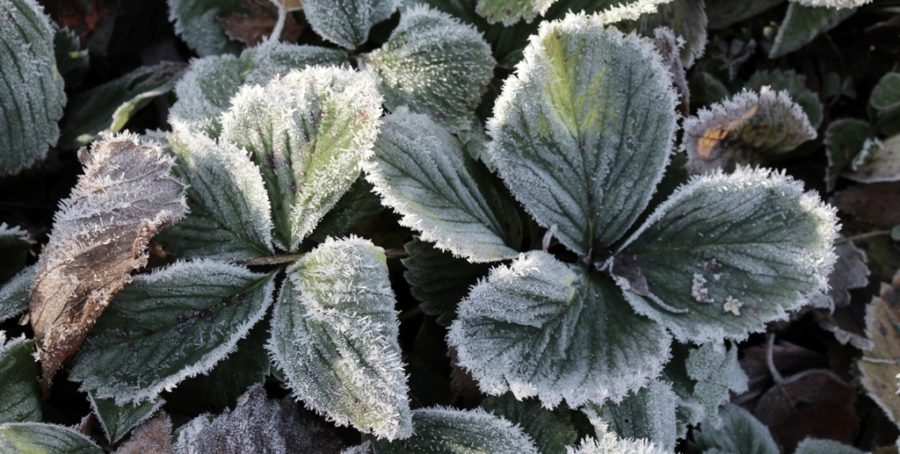
Warning: Frost!
Have your green thumbs been itching to get outdoors and into the dirt? Ours too, like they do every year once the sun starts coming out from behind the clouds. Typically, it’s safe to start planting outdoors around the Victoria Day weekend, but remember that Mother Nature is in charge of the schedule—some years we’ve had frost as late as early June!
Even though frost may look pretty, when it comes to tender annuals and vegetables we always recommend to err on the side of caution; one degree can make a life-altering difference to your gardens! Cold weather, and especially frost, causes the water in the plant’s cells to freeze, leading to severe cell wall damage. Frost-damaged plants can look fine in the morning, but once they start to thaw they’ll scream for help with their limp, blackened, and distorted growth. What a nightmare! Follow these tips to help avoid such horrors and give your outdoor spaces a healthy start to the growing season:
Watch and Wait: It’s hard to be patient, but when it comes to frost and cold weather we really have no choice. Check your local weather reports daily, not just for frost warnings but any temperatures below 10°C day or night. You can put tender annuals and vegetable plants outside once the mercury goes above 10°C, but if it drops below that magic number you’ll have to bring everything back inside. Seriously, we cannot stress this enough:
Annuals and Tender Vegetables CANNOT TOLERATE Temperatures Below 10°C!
While You’re Waiting: If you purchased early, either from excitement for the gardening season or because you wanted to make sure your dream varieties didn’t sell out, you’ll need to give them their required light, water, and warmth while they wait out the chill. The best strategy? Keep them indoors until we reach that magic line on the thermometer (you know, the one at 10°C). You can place them outdoors during the day, but only if the temperature is above that number, and you’ll have to bring them back inside for the night. We do not recommend keeping your plants in a garage or garden shed, unless it’s heated to above 10°C and has great windows for natural light. Keeping your plants outside on a covered porch or under an overhang is also a big and unnecessary risk: rain and snow may fall down from the sky but cold air will surround your plants and freeze them from all sides. Save yourself the heartache, and keep your plants inside the house.
If You Just Couldn’t Wait: We get it, we all want spring to arrive and, sometimes, we can be impulsive when it comes to safely planting outdoors. If you waited until the hard frosts (around -4°C) have passed, you can still save your plants from light frosts (around 0°C) and cold temperatures by tucking your plants into bed. Grab some old bed sheets, drop cloths, or other linens and drape them gently over your plants, and use stones or pots to anchor them so they don’t blow away; you can also use overturned pots on top of your plants, as long as they don’t squish down any growth. Your garden may look like a haunted cemetery, but at least it’ll be protected from the worst of the chill. Remember to remove all coverings during the day so the plants can get adequate light and warmth. Please note: this method may not save you from extreme exposures, so you may still see damage or stunted growth.
But Wait, What about Watering Against Frost? Sometimes a generous watering can help protect against light frosts, but we never recommend this method since it can so easily backfire. Plus, you’d have to water as the frost settles for optimal results, which is typically before 5AM! With that in mind, the option of keeping your plants nice and warm indoors sounds so much easier!
So Why Can Plants Handle Frost in the Fall? Simply put, because they’ve older. Young, tender plants with immature roots don’t stand a chance against Mother Nature’s chilly blasts, but come fall they’ve had time to grow and establish a strong root system, not to mention all the outdoor conditioning of being out in the elements. If you’re looking to extend your season, the covering method (you know, with the bed sheets) is the best way to protect your gardens, while bringing your pots and baskets into the house or even the garage is fine for fall. Just remember to put them back outside the next day.
What About Perennials? We call Perennials “hardy” for a good reason, as they can handle our cold winters and even need those months of below freezing temperatures to rest up for the next year’s displays. However, the pots on our benches are considered “young” and can get frost damage to their new growth if not protected from the chilly elements. Just like your annuals and vegetable plants, check daily and nightly weather reports for any frost or cold temperature warnings; our Perennial Centre may be unheated but it’s still protected from cold winds and frost, so the best strategy is to bring your perennials indoors overnight. If you’ve planted outdoors and they’re calling for a frost, the bedsheet/overturned pot method will help insulate your new perennials from the chill.
Can Tropical Houseplants be Put Outside? Not until it is 15°C day and night! Tropicals are even more tender than annuals and vegetable plants, and cannot handle anything under 15°C; typically this is around mid-June, but as always keep your eye on those weather reports!


